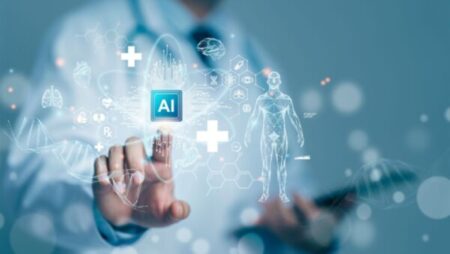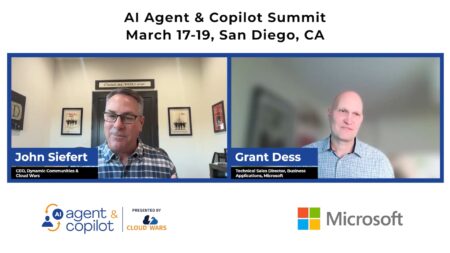The database market is branching in many directions as database providers develop platforms for every conceivable use case. Relational, analytics, document, key-value, graph, spatial, in-memory—there’s a special-purpose database for nearly every conceivable data type and workload.
Is that a good thing? Oracle doesn’t think so.
“If you’re a developer, why would you want to use five different databases to build your applications when you can use just one?” asks Andrew Mendelsohn, Oracle’s executive VP of database server technologies.
Oracle’s answer to the specialty database trend is Oracle Database 21c, a “converged database” that features improved support for JSON data types, graph models, and other capabilities found in purpose-built databases. “It’s going to make developers and analysts much more productive to have just one database to manage all of their data, in any workload,” says Mendelsohn.
In fact, researchers at Wikibon recently noted, “The more databases and data types that exist, the more specialized transfer systems are required. Sixteen databases would require 120 different transformation transport systems. Fifty databases would require 1,225.”
As such, Oracle’s all-in-one cloud database stands in stark contrast to competitors such as AWS, which offers 16 different standalone databases, and Snowflake, a data warehouse specialist with one single-purpose database. Google, Microsoft, MongoDB and many other vendors also sell purpose-built databases that are optimized for specific use cases.
This abundance of choice in database platforms is valuable, of course, but data management can get complex and unwieldy as disparate systems proliferate in the data center—usually arriving one at a time—to meet each and every business requirement. The challenges of a mixed database environment include data integration, transactions, disaster recovery, and security, says Mendelsohn.
In addition, costs increase because (1) people expertise and infrastructure are required for each specialized database, and (2) moving data across databases introduces delays and potential data inconsistencies that can affect insights crucial for meeting time-to-market objectives.
Multi-model, multi-workload innovations
Oracle Database 21c is a multi-model database—it supports relational, JSON, XML, graph, spatial, OLAP, time series, blockchain data, and more. It’s also multi-workload, capable of handling transaction processing, analytics, machine learning, streaming, IoT, in-memory, and multi-tenant (i.e. database within a database) workloads.
Oracle refers to 21c as an “innovation release”—it comes with more than 200 new features and improvements. Oracle Database 21c is available today in Oracle Cloud Infrastructure on Always Free Autonomous Database and Database Cloud Service. Later this year, it will be available on-premises (Exadata, Linux) as well as on additional Oracle cloud services (Exadata Cloud Service X8M).
Oracle plans to “backport” some of the new capabilities in 21c to its predecessor, 19c, as a way of bringing that installed base up to par on the latest and greatest. (Oracle did not have a 20c database release due to the COVID-19 pandemic.)
The upgrade to Oracle’s flagship database includes performance and productivity improvements that will appeal to different cross-sections of Oracle’s customer base. For database administrators, that includes persistent memory, multi-tenant, and sharding. And for database users, from LOB analysts to data scientists, the attention-grabbers include automated machine learning, graph analytics, and more.
Here’s a recap of Oracle Database 21c highlights:
- AutoML makes it easier for experts and non-experts alike to leverage machine-learning capabilities within the database and build ML models. New algorithms for anomaly detection, regression, and deep learning analysis have been added to the database’s library of ML algorithms.
- Persistent memory gives a performance boost to IO (input/output) workloads by storing data in local persistent memory. New algorithms prevent partial or inconsistent stores to persistent memory.
- “Sharding” Advisor assesses the database’s schema and workload and provides an optimal design. That’s helpful because sharding—the horizontal partitioning of database tables into smaller components for distribution—can be complex. But it’s also hugely helpful, both for data governance and to hyperscale databases. Backup and recovery across shards have also been automated.
- Graph Models, which are based on relationships in data sets from environments like social networks or IoT, gain higher performance in 21c (courtesy of memory optimization). For some customers, these graph capabilities may be an alternative to standalone graph databases such as Amazon Neptune or Neo4J.
- Native JSON data type, a new binary representation of JSON documents in 21c, results in more favorable comparisons to JSON/document databases from the likes of AWS, MongoDB, and others. In fact, Oracle says its SQL/JSON implementation is two times faster than MongoDB and AWS DocumentDB on the open source YCSB benchmark.
- Native Blockchain Tables provide in-database immutable, insert-only tables, where rows are “chained together” by cryptography. This type of tamper resistance helps protect against hacks and illicit changes. Angelini Pharma, a pharmaceutical company in Italy, is using blockchain tables in experiments with a wearable device integrated with a data-security tool.
Smartphone of databases
Developers should also see productivity improvements. JavaScript has been added to the database, which means developers can now execute JavaScript code inside the database, where the data resides. Separately, Oracle announced that its low-code development platform, APEX, is available as a managed cloud service on Oracle Cloud Infrastructure.
What does the crystal ball tell us about the future of purpose-built databases versus converged databases? Who will win the strategy clash of specialized versus converged?
Mendelsohn compares it to the device proliferation of a generation ago, when many people owned and lugged around specialized devices: cell phones, cameras, video cams, MP3 players, GPS devices and hand-held voice recorders.
Then, people started buying iPhone and Android smartphones, which converged and replaced the one-off devices.
“The smartphone won,” Mendelsohn says. “The notion of converged databases is exactly the same.”
This article brought to you by Oracle.








